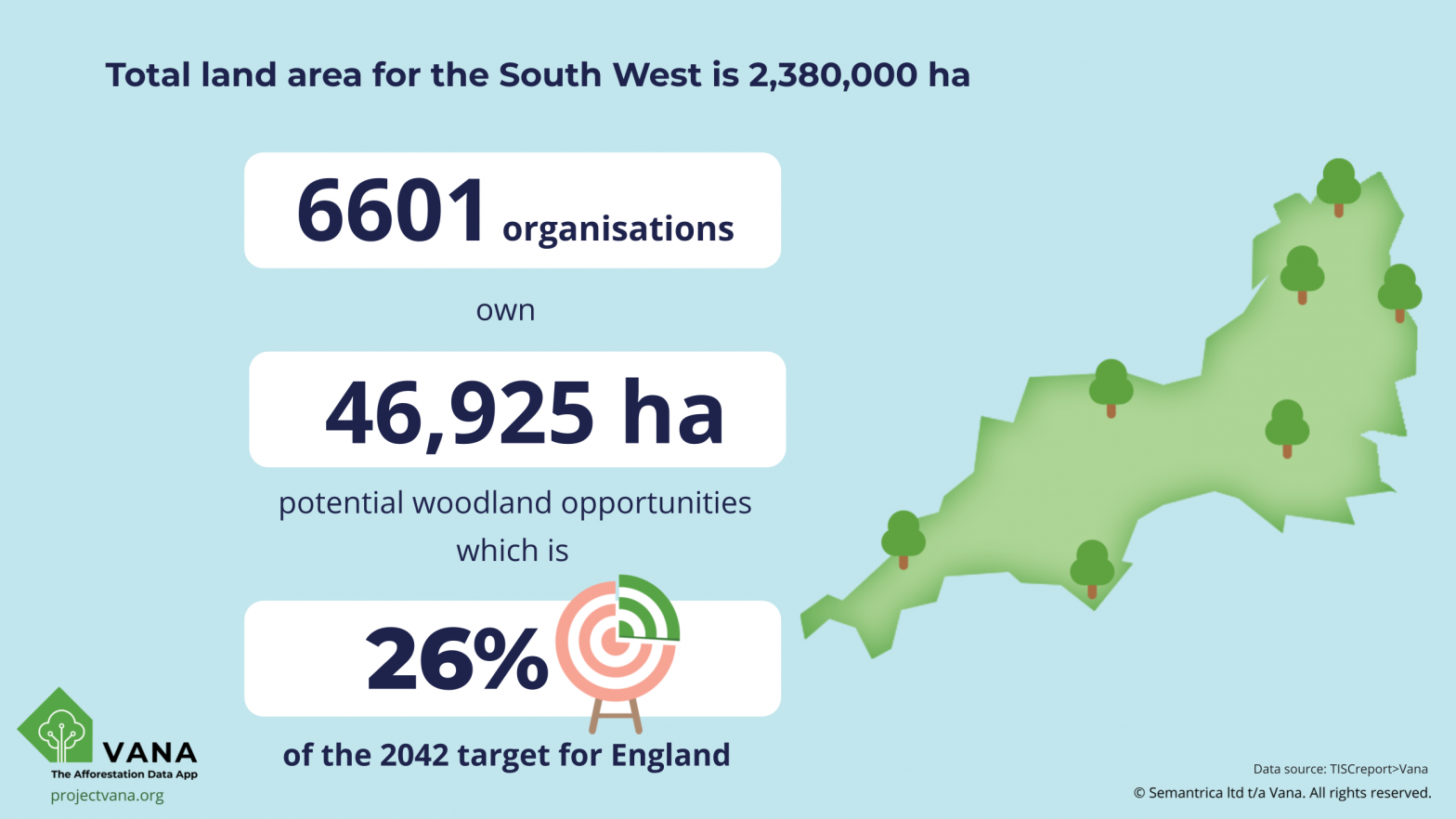G7 is meeting in Cornwall because the South West of England is seen to be central to the UK’s green technology sector. However, the region is even more significant. According to new research by the South-West-based eco-transparency platform Project Vana, it also has 26% of that suitable land within its boundaries, just from corporate landholdings.
The UK has set the world’s most ambitious climate change target, aiming to cut emissions faster than any other G7 country. The South West will be held as the exemplar for this change. The stunning region has seen a decline in biodiversity at a faster rate than the UK average, and with goals for Cornwall to become the first net-zero region in the UK, the pressure is on to kick start major land restoration and regeneration across the region.
Many countries have pledged to increase tree cover as part of climate action measures. However all are facing similar issues because much of the land required is held privately, and it is difficult to see who owns it. However, England is ahead of the game because it now knows where suitable land is *and* who owns it, thanks to the strength of its data infrastructure.
In the South West, corporate landowners own 46,925 Hectares of land identified as “woodland opportunities”. It is clear that corporates are overwhelmingly the best hope of enabling the South West to achieve its net-zero targets.
Full release can be found here:

